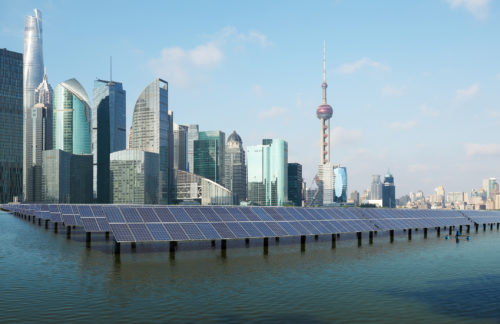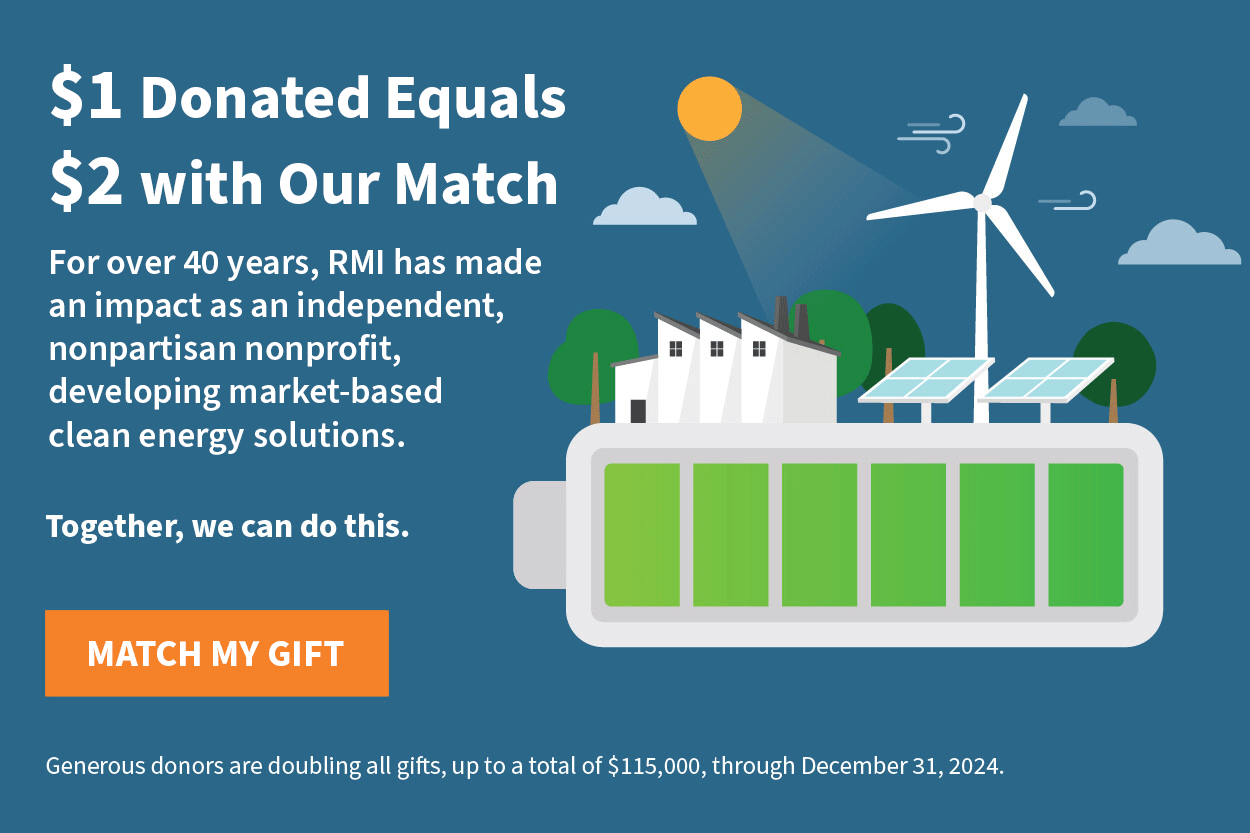
Report Release: State of the Market 2017: Corporate Renewable Procurement in China
Over the past decade, China has become the world’s leader in wind and solar capacity. Traditionally, China’s electricity structure has been closed off to most forms of corporate renewable procurement. But as a growing number of companies commit to reduce their carbon emissions and increase the amount of renewable energy they consume, reforms over the past two years have created new opportunities for companies in China to use cleaner power. These companies can help China increase its wind and solar capacity by 40 percent by 2020 over 2016 levels.
Given the new opportunities that are emerging as China reforms its power sector, many companies are not aware of their options. Rocky Mountain Institute’s new report, State of the Market 2017: Corporate Renewable Procurement in China, lays out China’s power sector landscape and the procurement options available to corporate buyers. The report is the result of 18 months of in-depth research, consultation, and interviews with more than 60 corporate buyers, over a dozen local developers, local grid companies, dispatch centers, intermediaries, and other NGOs working in the space by the Business Renewables Center China (BRC China). In July 2017, more than 50 participants came together for BRC China’s first intimate and interactive two-day workshop in Beijing where participants collectively identified the barriers to transacting and sketched out potential solutions. The report includes the research that informed that discussion, insights gained during the workshop, and subsequent follow-on investigation.
China Is Undergoing Its Most Important Electricity Reform in over a Generation
China is a leader in renewable energy. In 2016, China added over five times more wind and solar capacity than the U.S. did in the same year. But China’s envious wind and solar capacity figures hide some of the problems the country faces: high levels of renewable energy curtailment; difficulty moving renewable energy from the north and west parts of the country to the coast; a dispatch system that doesn’t reward clean, low-priced energy; and few viable, economic, replicable, and scalable options for companies to use 100 percent clean energy.
The last few years of power reform targeted every point in the value chain—including generation, transmission and distribution, and retail sales—and should modernize the way power is produced, transmitted, and sold in China. For example, in March 2016, China established two Interprovincial Transaction Centers to enable direct transactions across regions and introduce market pricing. Then in February 2017, Qinghai sent 6.4 GWh to Zhejiang and Jiangsu in the first pilot interprovincial renewable spot market. An active renewable spot market could bring otherwise curtailed power into the system at a lower price than the system of guaranteed hours/guaranteed prices, making it attractive for both developers and corporate buyers. For consumers such as industrial parks, a policy in March 2017 established ground rules for community solar, opening a new mechanism to procure local power for companies without sufficient rooftop access. And in July 2017, Beijing implemented a voluntary renewable energy certification (REC) system to replace the country’s subsidy system and provide a tracking mechanism. This new system is fundamental in ensuring claims on electricity use are credible.
An Expanding Market for Corporate Options
Companies in China are demanding access to renewable energy. And while the government has made great strides to develop policies that support the integration of more renewables, few mechanisms exist that fulfill many company’s internal demands (including additionality, geographic considerations, and risk profile). In State of the Market 2017: Corporate Renewable Procurement in China, we lay out the nine existing and emerging options in China:
Existing:
- Renewable energy certificates (RECs): Customers who purchase RECs can claim that amount of renewable electricity consumed. There is both a domestic pilot REC market (as of July 1, 2017) and an international REC market.
- On-site solar and wind: Companies put distributed renewables on site so they can directly consume power and sell the excess power back to the grid. Companies can own the assets or enter into a contract with a developer. The economics of rooftop solar projects are often favorable. Customers can claim clear renewable power consumption and additionality. But generation from on-site renewables may produce only 5–10 percent of a company’s load.
- Direct investment in utility-scale renewables: Companies directly invest in utility-scale renewable projects such as a wind or solar farm, owning a specified share of the renewable project.
Emerging:
- Negotiated bilaterals: Direct contracts for physical delivery of power between generators and corporate consumers (normally within provinces).
- Centralized bidding: Both intraprovincial and interprovincial transaction centers offer centralized match-making platforms that combine renewables and thermal power for qualified buyers and generators. Buyers and developers submit bids and offers, and the market clearing price is determined by demand and supply. Buyers get a discounted price (from the government-set catalog price) for undifferentiated power with a specific percentage of renewables.
- Interprovincial renewable spot market: The interprovincial spot market moves renewable power from the northern and western provinces where it would otherwise be curtailed. While the grid companies are the current buyers, there’s potential to extend it to corporate consumers.
- Retail companies: Retail companies resell power to commercial and industrial customers. If policies allow, retail companies could represent customers to participate in the newly established interprovincial curtailed renewable spot market. Retail companies help customers with smaller loads enter deals or help companies with a low tolerance for price volatility be shielded from market risk.
- Virtual power purchase agreement (VPPA): A financial agreement that allows buyers to claim they use renewable power. It is a contract between a corporate buyer and a renewable generator that provides additional renewable generation onto the grid, price stability for generators over the term of the contract, and a clear claim of additional renewable power for buyers in a province with limited renewable curtailment.
- Community solar: Companies buy excess renewable energy from their neighbor’s rooftop or nearby solar installation via distribution lines. The renewable power is not limited to rooftop solar, but could be other forms of distributed or even mid-scale renewables. Community solar is emerging with the industrial park microgrid development.
For interested companies, BRC China will host a second workshop in 2018 that aims to expand the community of sustainability professionals in China, allow for peer-to-peer learning, and collectively agree on the most pressing challenges to work on collaboratively. BRC China is also creating working groups for buyers and developers interested in tackling regional and mechanism-specific challenges to pilot out scalable and economic deals.
Already, companies are sending a clear signal to the government, grid companies, and power generators that there is a strong demand for renewable power. By making the information in State of the Market 2017: Corporate Renewable Procurement in China public, we hope more companies will explore their options and help catalyze this nascent market.
Image courtesy of iStock.
